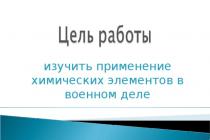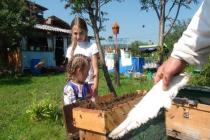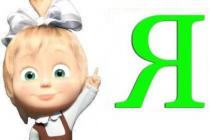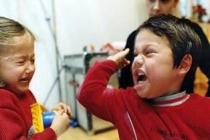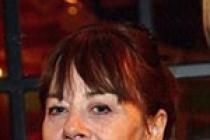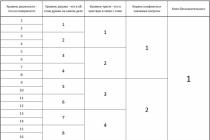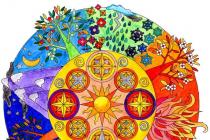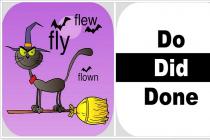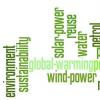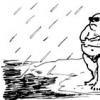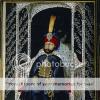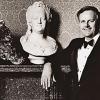Steps from "A" to "Z" for beginners and experienced
Project: a set of planned actions taken to solve the problem of a specific target group, limited in time and resources, with specific results.
Social project: a program of real action, the goal of which is aimed at solving a pressing social problem in society, and the objectives are for positive results and changes in society.
Basic requirements that the project must meet:
relevance– the reason, the basis for the implementation of the project must correspond to the requirements of the time, a separate target group or other aspects that explain the emergence of the project idea;
time– the project must be limited in time;
resources– the project must have a clear description of the needs;
quality and results assessment– the scale for assessing the effectiveness of the project is determined in accordance with your goals, but the results you strive for must be clear, amenable to analysis and comprehension.
Projects can be simple and complex, short-term and long-term, with a limited and substantial budget, risky and with completely manageable risks, with different results. In any case, the project is aimed at solving a specific problem. The project must be systematic, logical and adequate, that is, each section must correspond to all the others (tasks must correspond to the goal, the mechanism must correspond to the goals and objectives, the budget must correspond to the goals, objectives and mechanism, etc.).
How to write and format a project? Steps from "A" to "Z"

Step #1: Decide on an idea, analyze the problem.
What would you like to change?
What and in what way (in the most general terms) would you like to achieve?
What problem do you want to solve?
You wrote down the answer → moved on to defining the scope of the project activity, defining the problem you will work on.
Analyzed the problem → determined what you want to change → a project idea arose → move on to detailing and describing the project.
Step #2: Write the goal of the project.
Target- a general description of the expected results and expectations, the highest point of achievement that the organization strives for during the implementation of the project. A goal is a course of action to achieve the desired result.
The goal should be formulated in such a way that its achievement completely solves the problem that has arisen. The formulation of the goal should be based on the formulation of the problem. We can say that the goal is the problem in reverse.

Ask questions for the purpose of your project:
Is there an exact expression of what exactly should be the result of the project?
Will we be able to see and measure the results of the project as a whole and its individual parts?
Is the goal realistic? Is it possible to achieve the stated goal given the available resources?
What benefits or benefits will be obtained as a result of achieving the goal by the project team and other stakeholders?
Step #3: Write the project objectives.
Project objectives- these are specific steps that need to be taken to change the existing situation for the better, these are steps to achieve the goal.
INimportant to remember! There can be several tasks, all tasks are steps towards achieving a goal, interconnected and related to the goal of the project.
Use verbs. For example, if you need to build a house, then the tasks will be: laying a foundation, erecting walls, building a roof, installing communications, doing interior decoration, etc.
Check. Objectives must completely cover the solution to the problem (the set goal).
Analyze. Tasks must be effective (as a result, changes after the project consist of specific results).
Step #4: Check the goal and objectives according to the smart criterion.
We look at our goal and objectives, check them according to the SMART criterion, and adjust them if necessary.
|
Specificity |
|
|
Measurable |
|
|
Achievable |
|
|
Rewarding |
|
|
Time bound |

For example: Goal: “Construction of a house” - can be specified according to the SMART criterion as follows: “Construction and commissioning of a 2-story, 6-apartment building for families of young professionals in the village of Vychegda by the second quarter of 2014.”
Step #5. We build a logical chain of actions from tasks.
We have determined the goal and objectives → Let’s start planning: how it will all happen.
From each task we build a logical chain of actions: how we will achieve the result. Sometimes it helps to draw the entire chain of actions and tasks in order to understand the logic of the project in each direction.
For example, if we are talking about building a house for the families of young professionals, then our task blocks may be related to:
directly by construction
agreements with government authorities
with working with the target audience – families of young professionals
working with the press on PR of the project and the event in general.
This logical chain will help us write a project schedule in its logical sequence.

Step No. 6. We write an action plan, a work schedule.
The plan determines the order in which all work will be performed: it describes what, who will do it and when, in a logical sequence + makes it clear what resources are needed. When planning, you can use various forms, schedules, plans.
For example: Project implementation plan. Example No. 1
Project implementation plan. Example No. 2
Project implementation plan. Example No. 3
It will also be useful to make a network plan - schedule.
Step #7. We calculate how much our project will cost.

Each stage of project implementation requires a certain expenditure of funds and resources:
how much money is required to implement the project? What will they be spent on?
From what sources is the money expected to be received? Grants, subsidies, sponsorships, etc.?
This section of the project must relate very closely to other sections of the project, especially the implementation mechanism and project schedule.
Possible cost estimate for the project:
|
Name of items and expenses |
Cost calculation |
Financial costs for the project |
|||
|
Available funds |
Requested funds |
||||
|
|
|
|
|
|
|
|
|
|
|
|
|
|
The “budget” (estimate) must be itemized.
Main expenses:
rental of premises and utility payments
travel and transportation expenses
equipment
communication and communications
holding special events
publishing costs
Consumables
and other direct costs that directly go to your project.
"Other expenses"- this is an optional item that is included in the budget if there are expenses that are not reflected in other items. This article must be especially carefully argued.
"Salary"- includes direct wages of project personnel and specialists hired temporarily under a contract, as well as “Income tax accruals” - 35.8% of the total wage fund for personnel and attracted specialists.
It is necessary to pay special attention to the last three columns in the budget table: “available funds”, “requested funds”, “total”. The “available funds” column should indicate the funds that you and your organization are investing in the implementation of the project. For example: the involvement of volunteers as staff or external specialists must be reflected in the budget item “salaries” in the “available” column, and the amount will correspond to the costs that the organization would have incurred if paid employees had participated in the project implementation instead of volunteers specialists.

If the organization, you or sponsors provide any office equipment for the implementation of the project, then in the “available” column it is worth indicating its approximate cost, taking into account its service life.
In the “required” column, it remains to indicate the amount of funds that the organization lacks to implement the project.
Step #8. We write the results.
When drawing up an action plan and calculating a budget, we may realize that the results may be even greater than we planned. It is important that our results correspond to the purpose of the project.
In a project, the results can be written down in text; here we suggest you fill out a worksheet to determine the results:
Quantitative result(what will be done?) - records the number of services provided, participants in events, recipients of specific assistance, number of books published, etc.
Quality result(what will change?) - should reflect the positive changes that will occur as a result of events, provision of services, etc.
Efficiency- Are the results obtained commensurate with the efforts expended?
The criteria for assessing the effectiveness of a project are results that demonstrate how well the developers understand what they are striving for and how they will achieve it.
Step #9. we draw up the project.
A completed project usually contains the following sections:
Brief summary of the project: briefly describe your idea (3-5 sentences), goals, results (no more than 1 A4 sheet, 12-14 font)
Detailed description of the project:
The relevance of the problem, why your project is important and necessary.
Goals and objectives of the project.
Target group of the project: who is your project intended for, for whom are you doing it.
Project implementation mechanism: stages, substantive activities, events, etc.
Schedule plan for project implementation (remember about visibility, schedules are welcome).
Budget (estimate).
Specific expected results (quantitative and qualitative), criteria and methods for evaluating results, the effect of the project in the long term.
Possible further development of the project, if anticipated.
applications (photo materials, diagrams, sketches, etc.)
The design of the project text is as important as its content. Use large font size (at least 12 font) and one and a half spacing. Highlight the main points, structure the text to make it easier to read, use headings and subheadings, bold fonts and underlining, bulleted lists, etc.

If you need to make a presentation:
for each section no more than 1-2 slides;
the font should be as large as possible and readable even from afar, the title and text of the presentation slides should be printed in the same font, it is recommended to use a font size of at least 20 in the presentation;
when using a light background, the font should be black or a very dark shade of other colors (brown, blue); when using a dark background color, the font is white;
In history lessons, the use of the project method contributes to students’ conscious learning and consolidation of new material. The learning process is based on the completion of projects on one of the selected topics. The topics of design work are so diverse that it makes it possible to implement interdisciplinary connections. When studying topics on the history of Russia, the result of students’ project activities is a ready-made computer presentation, website, or video. Presentations and projects of students can be used by the teacher in the classroom quite widely, as a result of independent research, as the formation of information competence, and allow students to develop their creative abilities and thinking.
Individual project “The History of My Name: Ivan” in 5th grade
Supervisor:
Project completion time: 2 weeks.
Pedagogical goals of the project:
- inclusion in the adolescent’s system of value relations of relatives who passed away before his birth;
- a fifth-grader’s deep acquaintance with the history of his family using specific materials;
- establishing a connection between the history of the family and the history of the Fatherland.
Practical goal of the project: a study of the contribution of one of the student’s ancestors to the history of Russia.
Project issues:
1. Why was I called by this name?
2. Why was this name the most popular in my family over different generations?
3. What events preceded this family tradition?
4. Which of my ancestors bore this name?
5. What important events in the history of our country took place during the life of the chosen ancestor?
6. What part did he take in them?
Project outputs: creative written work “Family Traditions of My Family”, presentation program Windows Movie Maker 2 (grandmother’s memories, parents’ stories about an ancestor, a selection of photographs related to the ancestor, family heirlooms, places of the city).
Abstract and stages of work on the project. Family themes are very subtle and problematic. In the context of the widespread social ills of the Russian family, it does not always seem correct to puzzle a child with the study of his own family roots. Therefore, this and all other individual projects must be solely the result of the voluntary choice of the students themselves. Thus, at the first stage, the teacher invites students to participate in this research project. Project issues are designated as a topic for conversation with parents and grandparents.
The first week is the stage of collecting information (oral history, photographs, documents from the family archive, relics). By the next lesson, the student must choose and justify which ancestor and why he chose to do the work, and what the specific form of the project's output will be. The teacher should discuss with the students the upcoming presentation at the project presentation, and note the most strong and attractive aspects of the collected information, which should be reflected in the presentation.
The second week is the stage of preparation for the release of the project. The content of the project can be designed in genres of varying degrees of complexity. The simplest is an essay on a topic according to a plan, indicated by any events 3-4 questions of the project, with illustrations in the form of photographs. A more complex one involves creating a chronology of family life. After the second week, a presentation of the prepared projects is held.
Routing
Student work |
Consultations |
|
| Introductory stage. Orientation lesson; goals, objectives of project activities, approximate topics and genre of the future project. | Working with materials, searching for information on the Internet, working in the library, forming project groups, | Conducting consultations on technology for performing design work on the selection of topics and genres of educational projects, sources of information. Assisting students in selecting an individual project style. |
| Search and execution stage. Collection and systematization of materials | Development of the structure of the multimedia presentation “Ivan. The story of my name”, creating a scenario plan, working out key points in the essay “Family Traditions of My Family” | Regular organizational and advisory sessions on the content of educational projects. |
| Generalization stage. Registration of the results of project activities | Preparation of public defense of projects | Dress rehearsal for public defense of projects. Finalization of projects taking into account comments. |
| The final stage | Project protection. Summing up, analysis of work performance | Generalization of materials. Archiving projects. |
Possible forms of project presentation: demonstration of a video followed by answers to questions (3-4 min.).
The history of my name
My name is Ivan, I'm 11 years old. When I was born, my parents had no doubt what to name me. The name was given to me before I was born. In 1901, Yakov Sitnikov, my great-great-grandfather, was lucky enough to see Father John of Kronstadt on the pier in Tsaritsyn. During his lifetime, the Russian people revered the priest as a saint, and throughout the 20th century, Orthodox families kept his portraits and works. The diary of Father John, which is called “My Life in Christ,” copied by hand, became a reference book for my great-grandmother, Daria Yakovlevna Sitnikova. It was customary to name the eldest sons in honor of John of Kronstadt. In 1922, a son, Ivan, was born into the family of my great-grandfathers. In the summer of 1941, Ivan volunteered for the front. After completing the lieutenant course, he becomes a reconnaissance platoon commander. In 1943, he spent 10 months with the partisans in Belarus. Ivan died in March 1945 near Konigsberg. It so happened that the next person to bear the name Ivan was me. I would like to grow up worthy of such a name. My dream is to become a film director and make a film about the Ivans, after whom I am named.
Individual research project “The Holy Blessed Prince Alexander Nevsky - the patron saint of Volgograd” in 9th grade
Supervisor: Ivakhnenko V.E., history teacher.
Project goals: find out why St. Alexander Nevsky is the patron saint of Volgograd.
Tasks: study the biography of the prince and find the relationship between the history of the city of Tsaritsyn Volgograd and St. Alexander Nevsky.
The significance of the project has been revealed.
The source base of the work is the life of the holy blessed Grand Duke Alexander Nevsky, publications of documents, periodicals. Books were used on the history of the Russian Orthodox Church, on the history of the construction of churches in Tsaritsyn, on their destruction in Stalingrad and the beginning of restoration in Volgograd, on individual clergy and Orthodox people of the city on the Volga.
The object of the study was the Alexander Nevsky Cathedral in Tsaritsyn and the restoration of the cathedral in modern Volgograd.
Time spent on the project: December-February 2006-2007 academic year.
Operating hours: 3 months.
ZUN and general academic skills:
- highlight the main idea;
Motivation for knowledge, work: personal interest of the student, self-realization.
Stage I: Introductory stage
Orientation lesson; goals, objectives of project activities, approximate topics and genre of the future project.
Stage II: Search and execution stage. Collection and systematization of materials
Information on the topic is collected and discussed. After a joint discussion, a basic option is selected. The teacher helps to create an action plan. The project structure is drawn up:
Introduction.
Chapter 1. Biography of the Holy Blessed Grand Duke Alexander Nevsky.
Chapter 2. The image of Alexander in literature
2.1 St. Alexander Nevsky in Russian folk and artistic poetry.
2.2. St. Alexander Nevsky in the judgments and reviews of Russian historians.
Chapter 3. Alexander Nevsky Cathedral in Tsaritsyn
3.1. “Build a cathedral in Tsaritsyn.”
3.2. Cathedral in Soviet times.
3.3. The rebirth of the cathedral.
Chapter 4. Monument to Alexander Nevsky.
Conclusion.
Stage III: Results and conclusions.
Our research has shown that the topic of the scientific work “The Holy Blessed Grand Duke Alexander Nevsky - the patron saint of Volgograd” is relevant for our time, for our city.
Stage IV: Presentation
The results of the work were presented for discussion in the form of a report and multimedia presentation.
Stage V: Evaluation of results
The project participant answered the questions posed and shared his opinions. The teacher evaluates the students' efforts, creativity, quality of use of sources, quality of the report.
Project abstract.
Interest in the personality of Alexander Nevsky increased when on September 12, 2006, on the day of the city of Volgograd, it was consecrated from the air with an icon of the holy prince Alexander Nevsky. I think that many then learned for the first time that our city has a heavenly patron - the blessed prince Alexander Nevsky, who, while in the Horde, visited the Lower Volga region. 2007 marks the 765th anniversary of the Battle of Lake Peipsi, in which Alexander Nevsky’s talent as a commander was revealed.
Goal: find out why St. Alexander Nevsky is the patron saint of Volgograd.
Objectives: study the biography of the prince and find the relationship between the history of the city of Tsaritsyn-Volgograd and St. Alexander Nevsky.
Relevance: during a sociological survey of schoolchildren, we were able to find out that when asked: “Do they know why St. Is Alexander Nevsky the patron saint of Volgograd?”, 70% answered no, 10% found it difficult to answer, 20% answered yes.
There are figures of the Russian land who become guardian angels of their people; happy events are attributed to their protection in the event of deliverance from various disasters. The prince, with the help of diplomacy, protected it from the devastating raids of the Tatar-Mongols, defended Rus' from Western invaders.
In the 19th century, three Russian emperors who bore the name of the blessed prince Alexander Nevsky, during the years of their reign, established the exclusivity of his veneration as a saint of the Russian land. In 1918, the consecration of the Cathedral of St. Blessed Prince Alexander Nevsky, who became the decoration of Tsaritsyn’s Alexander Square.
In Soviet times, the cathedral housed a car depot. The cathedral was blown up in 1932. A huge pile of broken bricks helped eliminate Stalingrad's backwardness in street paving.
In the battles for Stalingrad, the image of the holy prince helped strengthen the morale of our soldiers. During the days of the Battle of Stalingrad, the Military Order of Alexander Nevsky was established. The first award of this order took place for a feat accomplished in the Don steppes.
A monument to the heavenly patron Alexander Nevsky has been unveiled in Volgograd, which will soon find its final place in front of the newly restored cathedral.
Our generation should not forget the name of the Grand Duke and do everything to perpetuate his name. In our city, any street is worthy of bearing the name of the ancient Russian commander and statesman Alexander Nevsky.
List of used literature:
- Biographical dictionary of missionaries of the Russian Orthodox Church. Author-compiler priest Sergius Shirokov. M.: Publishing house "White City", 2004.
- Begunov Yu.K. Monument of Russian literature of the 13th century. "The Word about the destruction of the Russian land." M – L., 1965
- Dmitriev L.A. The Tale of the Life of Alexander Nevsky \\ History of Russian Literature X1 - XVII centuries. M., 1985
- Life of Alexander Nevsky. Prep. Text, translation and comments. V. Okhotnikova \\ PLDR: 13th century. M., 1981.
- Life of the Holy Blessed Grand Duke Alexander Nevsky \\ Lives and works of Russians: Lives and spiritual instructions of the great ascetics of Christian piety who shone in the Russian land. M., 1993.
- Ilovaisky D.I. Russian history. Formation of Rus': Kyiv and Vladimir periods. Prince Alexander Nevsky. M., 1996
- Kirpichnikov A.N. Alexander Nevsky: between West and East \\ Questions of history. 1996, "11\12"
- Klyuchevsky V.O. Old Russian lives of saints as a historical source. M., 1986
- Soloviev S.M. Readings and stories on the history of Russia M., 1989. P.144
- Khitrov M. Holy Blessed Grand Duke Alexander Yaroslavich Nevsky. Detailed biography with drawings, plans and maps. – M.: Panorama, 1991
- Materikin A.V. Alexander Nevsky Cathedral. Pages of the history of the first Tsaritsyn Cathedral. – V.: Publisher, 2004
- Ivanov S.M., Suprun V.I. Orthodoxy on Volgograd land: churches of Tsaritsyn-Stalingrad-Volgograd. Volgograd 2003
- “Trud-Volgograd” dated March 1, 2007.
- “Business Volga Region” No. 4 February 2007, “Volgogradskaya Pravda” dated February 20, 2007.
- “Business Volga Region” No. 7, February 2007.
- "First newspaper" dated February 2, 2007.
Group project “About Citizen Minin and Prince Pozharsky” in 7th grade
Supervisor:
Time spent on the project: September-October 2006-2007 academic year
Operating mode: 2 months.
– Study the topic “Time of Troubles” required by the curriculum and educational standards. But this is the beauty and difficulty of the subject of history, that any topic is an endless mosaic of events, situations, everyday objects, people, human aspirations and ambitions, which not only teaches, but also educates.
– This topic is beneficial for education. It fosters love for the Motherland, pride in one’s people, who have endured the heavy burden of war, teaches empathy and involvement with past events, and, perhaps, contributes to the emergence of the beginnings of a national idea.
– In the process of project activities, students further develop their emotionality, memory, logical and critical thinking, speech, and other creative abilities. Thus, educational project activities should ensure the development of various competencies of students.
ZUN and general academic skills:
- mastery of written and oral communication;
- possession of certain knowledge of history and literature;
- ability to work with informational text and additional literature;
- highlight the main idea;
- search for the necessary information.
Personal interest of students, self-realization
Work on the project was divided into five stages:
Stage I: Introductory stage
Orientation lesson; goals, objectives of project activities, approximate topics and genre of the future project. What do we celebrate on November 4th? National Unity Day. If we look through school textbooks, we will not find in them a detailed description of the events of that day.
Until now, November 4 was celebrated by the Orthodox Church as the feast of the Kazan Icon of the Mother of God, to whose intercession the militia of Minin and Pozharsky owed the liberation of Moscow from the Poles in 1612.
In 2005, this day became a public holiday. To understand its essence, let's turn to historical origins.
The work talks about victory over the occupiers and unity in the face of external danger.
In a unique case in our history, the militias of citizen Minin and Prince Pozharsky organized themselves not by order from above, but by their own will.
The memory of the heroism and sincere patriotism of the Russian people is very important today.
Stage II: Search and execution stage
Conclusions are drawn and the answer to the question is given: “Why do we celebrate National Unity Day on November 4?” Students also found out that in the Kirovsky district of Volgograd in 1951 a street named after Dmitry Pozharsky appeared, and in 1960 a street named after Kuzma Minin.
Stage IV: Presentation
Stage V: Evaluation of results
The teacher evaluates the students' efforts, creativity, quality of use of sources, quality of the report. In addition, the presentation can be used in Russian history lessons and in extracurricular activities.
Presentation outline:
| Slide 1 | In 2005, we had a new holiday - National Unity Day. Let's go back 400 years to understand it better. At the end of 1611, the misfortunes of the Russian land reached their extreme limit. Enemies tormented the Moscow state everywhere, ruining and devastating it. | Photo, text |
| Slide 2 | The Poles took Smolensk. And then the Polish detachment burned Moscow and fortified itself behind the surviving walls of the Kremlin and Kitay-Gorod. The Swedes occupied Novgorod and nominated one of their princes as a candidate for the Moscow throne. The first noble militia near Moscow was unable to repel the invaders. | Map, text |
| Slide 3 | Archimandrite Dionysius, abbot of the Trinity Monastery, wrote and sent letters throughout the state in which he called on all Russian people to Moscow to rid it of its enemies. In October 1611, one of the letters came to Nizhny Novgorod, where it was read to the people. | Photo, text |
| Slide 4 | And then a respected zemstvo elder named Kuzma Minin addressed the people: “Orthodox! Let's go to the aid of the Moscow state! Let's not spare our bellies! It's a great thing! I know: as soon as we move forward, many cities will come to us, and we will get rid of the foreigners!” | Photo, text |
| Slide 5 | The people liked Kozma Minin’s speech and began to ask him: “May you be our senior “man”! We surrender everything to your will!” | Photo, text |
| Slide 6 | And then Minin told the people of Nizhny Novgorod about the brave governor Dmitry Mikhailovich Pozharsky. | Photo, text |
| Slide 7 | Elected citizens went to ask Prince Pozharsky to lead the Nizhny Novgorod militia. The prince answered them: “I am glad to suffer to death for the Orthodox faith. And let Minin be in charge of the treasury.” | Photo, text |
| Slide 8 | Immediately after this, the collection of money began. Kozma Minin, first of all, divided his wealth into three parts and with great joy brought two of them to the treasury collected for the soldiers. | Text |
| Slide 9 | Then all the townspeople did the same. | Photo, text |
| Slide 10 | Soon after, the zemstvo army from various Russian regions gathered in Nizhny Novgorod. When the Nizhny Novgorod militia moved towards Moscow. Militia from other cities began to join him on the way, and everyone equally obeyed Minin and Pozharsky. | Photo, text |
| Slide 11 | And they went to Kostroma, then to Yaroslavl, Rostov and Pereslavl. Everywhere along the way they destroyed individual detachments of Poles. Finally, the militia approached Moscow. And they fought here courageously and firmly, not sparing their lives. | Photo, text |
| Slide 12 | By mid-October 1612, the Polish detachment settled in the Kremlin was left without help. On October 22 (November 4, new style), after fervent prayer in front of the Kazan Icon of the Mother of God, Russian troops launched an attack on the advanced fortifications of the Kremlin. | Text |
| Slide 13 | The liberators entered Kitai-Gorod and forced the Poles to leave it. | Map, text |
| Slide 14 | The militia went to battle with the icon of the Kazan Mother of God. And having won. They made a promise to build a church in memory of this day in the name of the Kazan Mother of God. | Icon, text |
| Slide 15 | November 4 marked a turning point not only in the fight against the conquerors. But also in the mood of the people! Moscow was liberated. The example of the unity of the entire people shown by the militia of Minin and Pozharsky during the liberation of Moscow is now celebrated as National Unity Day. | Illustration, text |
| Slide 16 | On October 26, 1612, the Moscow Kremlin was captured. The Polish garrison capitulated. | Photo, text |
| Slide 17 | All Moscow people came out to greet their liberators | Photo, text |
| Slide 18 | Having liberated Moscow from the Poles, Pozharsky and Minin hastened to begin electing a tsar. Which was supposed to forever save the Moscow state from unrest. In 1613, Tsar Mikhail Fedorovich Romanov was elected. | text |
| Slide 19 | Descendants have not forgotten the great merits of Minin and Pozharsky. In 1818, a bronze monument to the sculpture of Martos was erected in Moscow on Red Square. | Photo, text |
| Slide 20 | In the Kirovsky district of Volgograd in 1951 a street named after Dmitry Pozharsky appeared, and in 1960 a street named after Kuzma Minin. | text |
Used materials:
Literature: P. Polevoy “Illustrated stories from Russian history”, “Astrel” AST 2000 (according to the 1892 edition)
Paintings:
Khodov V. “Minin’s call to the people of Nizhny Novgorod”
Savinsky V. “Nizhny Novgorod ambassadors to Prince Dmitry Pozharsky. 1611”
Kivshenko A. “Appeal of Kozma Minin to the people of Nizhny Novgorod”
Scotty M. "Minin and Pozharsky"
Smolin A. “Minin and Pozharsky”
Lissner E. “The expulsion of Polish interventionists from the Moscow Kremlin”
Music:
Ensemble “Ivan-tea” “Song-Glory to the Russian Land”
Internet resources:
www.uznay-prezidenta.ru
Project topic: “Feat of selfless love” in 8th grade
Supervisors: Ivakhnenko V.E., history teacher, Babkina A.N., teacher of Russian language and literature.
Educational, educational and developmental goals: study the topic “The Decembrist Revolt
This topic is beneficial for education. It fosters a sense of duty, responsibility, teaches empathy and involvement with past events.
Educational project activities ensure the development of various competencies of students.
Project type: informational, educational.
Time spent on the project: about 2 months.
Operating mode: lessons and extracurricular activities.
Project support:
Textbooks and teaching aids on history by various authors, encyclopedias, reference books, monographs on the topic, Internet resources.
ZUNs required to work in the project:
The ability to work in the information field, using additional literature, the ability to comprehend, structure information, connect it with previous knowledge, and find its place in the outline of the lesson.
Motivation for activity: the educational project activity itself, interest in its results, the desire to realize oneself in a common cause, as well as interest in the material being studied.
Estimated increments: new, additional, previously unused information on this topic, obtained by the students themselves and applied by them in the lesson; ability to carry out educational project activities; personal competencies of students.
History educational project methodology involves, in our opinion, the implementation of a number of stages of educational activity.
I. Introductory part
To launch the project, teachers taught history lessons on the topic “The Decembrist Revolt” and literature “N. Nekrasov “Russian Women” in order to immerse themselves in the topic and in project activities.
II. Problematization
III. Students setting their goals - problems
During the discussion, we came up with the idea of studying the topic by completing an educational project.
IV. We tried to imagine and plan what result we would get. It was suggested that the topic “The Decembrist Revolt” should be brighter, more complete, and more interesting than in the textbook.
V. A mental, ideal result allowed us to outline steps - tasks for achieving the goal:
- it was necessary to determine into what parts the project would be divided;
- during the discussion, two emerged: “Portrait gallery of the wives of the Decembrists”; what made these women go to Siberia (using the example of Ekaterina Ivanovna Trubetskoy).
IV. The main work on the project began - search and research activities: collecting materials, understanding it, structuring it, designing it. During the work, problems arose for the teacher. Consultations were required, the work went beyond the lessons.
V. Designed the product project activities - a multimedia presentation and the website “Feat of Selfless Love”.
VI. And then it took place presentation our educational project
| Slide 1 | Decembrists... Almost all of them were very young. However, seized by patriotism and love for the Motherland, they walked with firm steps to Senate Square on December 14, 1825 to protest against serfdom and the tyranny of the autocracy. |
Photo, text |
| Slide 2 | By order of Nicholas I, the uprising was suppressed. More than 600 people were arrested. Nicholas I personally participated in the interrogations. The trial of the Decembrists took place behind closed doors. |
Photo, text |
| Slide 3 | Five convicted Decembrists were hanged in the Peter and Paul Fortress: Kondraty Ryleev, Pavel Pestel, Sergey Muravyov-Apostol, Pyotr Kakhovsky and Mikhail Bestuzhev-Ryumin. |
Photo, text |
| Slide 4 | These were harsh and dark stages. Mines, Chita convict prison, Petrovsky plant prison and then snow-covered bear corners scattered across the vast Siberian expanses. The convicted Decembrists were followed to Siberia by their wives, brides, mothers and sisters. |
Photo, text |
| Slide 5 | Ekaterina Ivanovna Trubetskaya was the first to follow her husband to Siberia. She was the daughter of a noble Frenchman I.S. Laval. Ekaterina Ivanovna's mother owned a large copper smelter, a gold mine and several estates. Sergei Trubetskoy and Ekaterina met in Paris. The prince came from a noble family. During the War of 1812, he glorified his name in the battles of Borodino. They got married in Paris in a small church at the Russian embassy and soon returned to St. Petersburg Four years of happiness have begun. Sergei Trubetskoy was distinguished by a kind, calm character, “had an enlightened mind,” was loved and respected by everyone. Ekaterina Ivanovna loved him passionately and was happy with him. Therefore, after his arrest, Ekaterina Ivanovna sent Nicholas I a request for permission to share her husband’s fate. |
Photo, text |
| Slide 6 | Trubetskoy had difficulty obtaining an audience with the Tsar. Nicholas I was angry. - Understand, madam, what you are planning is recklessness! Why do you need a convict Trubetskoy?! - Excuse me, Your Majesty, but Sergei Trubetskoy is my husband, and only death can separate us. I have to go to him... to Siberia. – As soon as you cross the Urals, you will immediately lose all noble privileges. You will have to say goodbye to titles, income, estates forever! - Your Majesty, I must be with my husband... The king gave her written permission, but his anger knew no bounds... |
Photo, text |
| Slide 7 | Trubetskoy rented a house at the mine. In the December cold, when prisoners drove to work, she gave them all the warm clothes, even ribbons from her fur boots - she sewed them onto the earflap hat of one of the convicts. Trubetskoy bought food for prisoners with her own money and wrote letters home on their behalf. She had to go through a lot then. But she never lost heart; my soul was light and joyful: she was with her husband again! |
Photo, text |
| Slide 8 | 11 women, young, rich, noble, abandoned social life, luxury and went to distant, harsh Siberia to share exile with their husbands, to support their courage and will to fight. The wives of the Decembrists had to overcome the resistance of their relatives, delays and obstacles on the way, the severity of the winter road, the Siberian cold and loneliness. How much you had to love and believe in order to endure all these trials! |
Text |
| Slide 9 | Photo by E. I. Trubetskoy; | Photo |
| Slide 10 | Photo by M.N. Volkonskaya; | Photo |
| Slide 11 | Photo by Davydova A.I.; | Photo |
| Slide 12 | Photo by Ivasheva K.P.; | Photo |
| Slide 13 | Photo by Muravyova A.G.; | Photo |
| Slide 14 | Photo by E.P. Naryshkina; | Photo |
| Slide 15 | Photo by Rosen A.V.; | Photo |
| Slide 16 | Photo by Fonvizina N.D.; | Photo |
| Slide 17 | Photo by M.K. Yushnevskaya | Photo |
| Slide 18 | “Captivating images! Hardly In the history of any country Have you come across something like this: Their names should not be forgotten..." N. Nekrasov |
text |
Used materials:
Literature: N.A. Nekrasov “Russian women”
Portraits:
Trubetskoy E.I.;
Volkonskaya M.N.;
Davydova A.I.;
Ivasheva K.P.;
Muravyova A.G.;
Naryshkina E.P.;
Rosen A.V.;
Fonvizina N.D.;
Yushnevskaya M.K.
Music:
For the film “Star of Captivating Happiness”, music by Isaac Schwartz, lyrics by Bulat Okudzhava.
Internet resources:
http://ru.wikipedia.org/wiki
www.wild-mistress.ru/wm/wm.nsf/bydates/2008-05-01-970051.html
Individual project “Trinity Symbolism by Andrei Rublev” in 10th grade
Supervisor: Ivakhnenko V.E., history teacher, Babkina A.N. teacher of Russian language and literature.
Time spent on the project: one month.
Educational, educational and developmental goals:
study the topic “Russian culture of the XIV-XV centuries,” required by the curriculum and educational standards;
to form an idea of the characteristics of Russian culture of the period under study;
explore the concept of the “Trinity”
Tasks:
Define
- concept;
- plot;
- iconography;
- composition;
- symbolism of color;
- symbolism of descriptive details.
In the process of project activities, students further develop their emotionality, speech, and other creative abilities. Thus, educational project activities should ensure the development of various competencies of students.
ZUN and general academic skills:
- possession of certain knowledge of history and literature;
- ability to work with informational text and additional literature;
- highlight the main idea;
- skills in working with a personal computer, working on the Internet;
- search for the necessary information.
Work on the project was divided into five stages:
Stage I: Introductory stage.
Orientation lesson; goals, objectives of project activities, approximate topics and genre of the future project. In the compositions of the Old Testament Trinity that preceded Rublev, the chambers of Abraham, the oak of Mamre were depicted, a table was placed with several objects on it, the figures of Abraham and Sarah were included in the works, and sometimes the scene of the slaughter of a calf. Attention was focused on Abraham's feast.
Stage II: Search and execution stage.
Collection and systematization of materials.
Information on the topic is collected and discussed. After a joint discussion, a basic option is selected. The teacher helps to create an action plan. The project structure is drawn up.
Stage III: Results and conclusions
In Rublev’s “Trinity,” three golden-winged angels sit in complete silence around a table with a bowl. In fact, there is no plot in Rublev’s icon. The house, rock, oak tree in the upper part of the composition only vaguely remind not of the plot, but of the place of the phenomenon. New content was added to the well-known iconographic scheme.
Circle– the main compositional theme of the Trinity. An invisible circle outlined the figures of angels. Everywhere there are repetitions of smooth rounds or their mirror reflections, the consistency of which produces an almost musical effect.
The compositional center of the icon is bowl. TO it directs the movements of the hands, manifesting the will of the persons of the Trinity. The middle angel points to the cup. It expresses the idea of the atoning sacrifice of Christ.
Middle Angel in a cherry tunic and a blue cloak. Both the symbolism of color and the sewn sign on clothing help to recognize Christ in the middle figure. He points to the bowl, bowing his head to his father in agreement. The majestic moment of the Eternal Council is captured.
God the Father (left angel) predetermines the cup of suffering.
Holy Spirit (right angel) affirms the immutability of sacrifice. A single decision was made: to save a person at the cost of Christ’s sacrifice on the cross. “This is how the icon painter gradually introduces us into the depths of the mystery of redemption, revealing to the world that divine love is sacrificial love.”
Stage IV: Presentation
The results of the work were presented for discussion in the form of a booklet and multimedia presentation.
Stage V: Evaluation of results
The teacher evaluates the students' efforts, the quality of the use of sources, and the quality of the report. In addition, the presentation can be used in Russian history lessons, Fundamentals of Orthodox culture and in extracurricular activities.
Used materials:
- Children's encyclopedia “Art”, Avanta publishing house
- Teaching history at school 1997 Publishing house “School-press”
- Art 1969 Publishing house “Prosveshcheniye”
Student age: Grade 11.
Time spent on the project: January-February 2004
Operating mode: 16 teaching hours.
Material, technical, educational and methodological equipment: personal computer, scanner, monitor, school and district libraries.
ZUN and general academic skills:
- mastery of written and oral communication;
- possession of certain knowledge in history, computer science;
- ability to work with informational text and additional literature;
- highlight the main idea;
- search for the necessary information;
- use a variety of teaching techniques
Motivation for learning and work: personal interest of students, self-realization.
The knowledge that the result of the project is aimed at obtaining: knowledge of the history of Russia, the use of accumulated materials as a teaching aid for mastering modern information technology skills.
Skill development:
- independent work with historical sources, information technologies;
- independent decision-making;
- communication in role interaction, information exchange;
- mental activity when designing, planning activities, working with sources of information, structuring information.
Work on the project was divided into six stages:
Stage I: Preparation
Students are asked to prepare a teaching guide for students to help them study this topic. The methodological manual should introduce the reasons and reason for the war, the course of hostilities, and summarize the results of the war. Finally, students are invited to submit their work for viewing in the form of an electronic resource. The topic and goals of the project are determined.
Stage II: Planning
Having determined the tasks, students are divided into four groups:
- 1 group (2 people) are studying the causes of the Russo-Japanese War;
- 2 group (5 people) the course of hostilities on land and sea;
- Group 3 (2 people) sum up;
- Group 4 (2 people) combine all the “products” together.
During the analysis and discussion of the project, an action plan is developed and an analysis of the existing situation is carried out. What already exists and what would need to be done? A bank of ideas and proposals is being created. Throughout the work, the teacher helps in setting goals and corrects the work.
Stage III: Research
Project implementation options are accompanied by drawings, diagrams, and combat maps. Information on the topic is collected and discussed. After a joint discussion, a basic option is selected. The teacher helps to create an action plan. The manufacturing technology for the project is being drawn up. The teacher adjusts the sequence of technological operations in each group.
Stage IV: Results and conclusions
Students, having chosen the optimal manufacturing technologies, present presentations of their work, analyze the collected information, and form conclusions. All work is carried out under the supervision of the teacher.
Stage V: Presentation
In a history lesson, the work is presented to students in the whole class. The result was a training program on the history of the Russo-Japanese War (1904-1905). It includes maps, battle diagrams, illustrative and reference materials, video materials, and tests on the topic.
Stage VI: Evaluation of results
Conclusion
The development of this project is a path to personal self-development. Through awareness of one’s own needs, through self-realization in objective activities. In addition to working with a specific topic, a wide range of personal communication connections with the children in the group and with teachers is offered. Through the creative process there is complete and deep satisfaction from what has been done. In the process of work, creative activity develops, the child’s social position is determined, and patriotic feelings are nurtured.
Used materials:
Children's encyclopedia “History of Russia. XX century", publishing house Avanta
Teaching history at school 1997 Publishing house “School-press”
http://ru.wikipedia.org/wiki
rjw.narod.ru
According to the Federal State Educational Standard, history projects can be completed by schoolchildren individually or in a group of 3-4 people. Such activities are mandatory after the introduction of new educational standards in domestic schools.
Modern requirements
Currently, modern society urgently needs creative, educated, caring young people.
It presents the school with a social order to educate a mobile, literate individual who is aware of his cultural, historical, and spiritual affiliation with the country, and understands his responsibilities and rights.
Significance of research activities
Any creative history project involves applying standard knowledge to new conditions. not only learns to use a variety of historical sources, but also develops the skills of conducting scientific discussion.
The topics of history projects can be general, relating to certain stages of human development, or have a narrow focus - on the study of individual events, periods, people. Regardless of the type of activity, any research work requires serious and lengthy preparation and systematization of the material.

Work structure
Topics for history projects can be proposed by the supervisor or chosen by the students themselves. Despite the fact that the content of the work differs significantly, there are certain general rules that must be taken into account.
It is necessary to begin your scientific activity by thinking through an algorithm of actions, choosing a topic and purpose of research. At this stage, the help of a teacher is allowed; the success of all subsequent work of the child directly depends on him.

First example
For example, if a student is interested in toy history, it is important to choose a specific object to study. It is impossible in one work to mention all their types, to collect information about their appearance and use. Toy Story can be limited in its work to one city, family, or time period. This gives the material greater importance and significance, increasing its uniqueness.
Topics of research work in history related to toys are aimed at developing in the younger generation a sense of patriotism, pride in their city, family, and country.
Among the methods that will be required to carry out such work, we note: conducting a sociological survey, reviewing literary sources, and processing the results obtained. Special attention must be paid to the design of the work.

Second example
If a student decides to develop a project on the history of the city, this indicates his caring attitude towards the past of his country. What can you take for work? For example, the main historical monuments of the city and the time of their creation are considered as an object. If the work is carried out by a group of schoolchildren, they can develop a route that will include the main attractions of the locality and their detailed description.
Features of work
The topics of history projects can be related to folk traditions, national rituals, and family photographs.
Such works make it possible to connect several generations at once with a single thread, and to develop in growing Russians a sense of pride in their country. Children learn to independently plan their activities, make decisions, and establish contacts with other participants in the educational process.
The topics of history projects that junior schoolchildren choose mainly relate to a specific family or city. High school students have a wealth of knowledge, so their work has a more global scale.

Material for work
We offer you topics for research papers on history. Perhaps they will be of interest to the younger generation of enthusiastic, caring Russian schoolchildren.
- Macedonian in the Hellenistic era.
- What do we know about Alfred Nobel?
- Fortresses and castles of England.
- Past and present of the English alphabet.
- Socio-economic development of Greece.
- Atlantis is a civilization worth learning more about!
- Attica during the collapse of slave-owning democracy in the works of Aristophanes.
- History and significance of balloons and airships in Russia before 1918.
- Uniqueness of China.
- Story
- Military equipment in Rus' during the X-XVI centuries. and the specifics of its creation.
- Martial arts in the period of Ancient Rus'.
- Boris Godunov: life and significance for the country.
- What is the Time of Troubles?
- Life of peasants in the Middle Ages.
- The fate of the family in the history of the country.
- Battle of Thermopylae
- Bogatyrs in the past and present.
- The Battle of Borodino through the eyes of the French.
- Gods of Ancient Rome and Ancient Greece.

Examples of research papers related to Russia
For example, the history of the creation of the Slavic alphabet can become the basis of several works at once:
- Life of the Slavs.
- Culture and religion.
- Beliefs of the Slavs.
- The magical world of ancient Russian myths and legends.
- Slavs and Vikings: features of relations.
- Slavic weapons.
- The appearance of the first writing.
Fans of the 17th-20th centuries may well start studying interesting facts related to these historical milestones:
- Great personalities in Russian history.
- Virtual trip around the USSR.
- The influence of time on the popularity of the historical figure I.V. Stalin.
- The influence of historical processes on the formation of Soviet power.
- The influence of epidemics on events that took place in Russia.
- The emergence of Russian humanism.
- War of 1812.
- Elected power as a factor in increasing the standard of living of Russian citizens.
- History of names and surnames.
- Heraldry: an inflorescence of history, knowledge and art.
- Cities of Russia in legends and traditions.
- Public holidays as a reflection of the characteristics of the political regime in our country.
- Welcome to Moscow!
- History of chess.
- Friendship since ancient times.
- Women in the history of our country.
- Lenin's life path.
- Forgotten Pomeranian Russian games.
- The Life of Queen Catherine II.
- How the Moscow region and Moscow appeared.
- Conquest of Siberia.
- Ivan IV the Terrible is the first Tsar of Rus'.
- Ivan the Terrible: a portrait of a personality based on the era.
- Ivan Susanin is a true patriot of the Russian land.
- The importance of accepting Christianity in Rus'.
- Iconography in Rus'.
- The history of the creation of the Moscow Kremlin.
- How coins appeared in Rus'.
- Russian pancakes - interesting facts.
- The history of Russian pancakes.
- Sailing fleet in Rus'.

Finally
Modern realities require young people to have logical thinking, teamwork skills, and planning of independent activities. Project and research activities fully contribute to the formation of a harmoniously developed personality who is ready to be responsible for their actions and will not experience difficulties in searching and processing the flow of information.
Today there is a constant increase in information flow in various fields of knowledge. It is important to gain the skills to quickly respond to all changes, including political and historical areas. Such skills are formed in the younger generation precisely in the course of project and research activities. That is why, after the introduction of new educational standards in Russian primary and secondary education, it became a mandatory step for schoolchildren to conduct independent research or joint, collective creative projects.
Such activities allow teachers to solve certain educational and educational tasks:
- development of critical and analytical thinking of schoolchildren during creative activities and implementation of educational projects;
- searching for talented and gifted schoolchildren and creating optimal conditions for their full development;
- nurturing a sense of patriotism in the younger generation of Russian citizens.
Project activities help children choose their future professional activity, avoid problems in social adaptation, and achieve success in academic and various extracurricular activities.
Approximate names of topics on which work can be completed by students of regular secondary schools are given above. They can be changed or supplemented at the discretion of young researchers and their supervisors.
Any projects related to the search for historical information about a city, country, era, or outstanding personality allow teachers to fully fulfill the state order.
New realities place special demands on the content and forms of domestic education, including the study of the fundamentals of history. Projects carried out within the framework of individual topics will be an excellent way of self-improvement and self-development for the younger generation.
History Research Project Topics
- profile
Russian history
Vikings and Slavs: a history of relationships.
Real and mythological images of ancient Russian princes.
Heroes of Russian epics and their real prototypes.
Princely congresses of the 12th–13th centuries. and their real meaning.
Historical reality of “The Tale of Igor’s Host”, “Prayers of Daniil the Zatochnik”, “Teachings of Vladimir Monomakh” and other works of ancient Russian literature.
Political system of medieval republics (Novgorod, Pskov).
History of Christianization of East Slavic territories.
The history of the canonization of princes Boris and Gleb.
Russian medieval monastery as a landowner and intellectual center.
International relations of Kievan Rus.
“Vlesova Book”: a history of falsification.
Problems of “feudalism” in the works of Russian historians.
Church reform of 1666: causes and results.
History of the Siberian Old Believers.
History of Old Believer book printing.
History of the Old Believer desert habitation.
History of Old Believer entrepreneurship (the Morozov, Ryabushinsky dynasties, etc.).
Old Believer self-immolations: myths and reality.
Images of monarchs of the 18th century (Peter I, Catherine II, Paul I) in Russian journalism of the 19th–20th centuries, school textbooks.
Political symbolism: royal weddings, coronation celebrations, inaugurations.
Russian social thought and the search for national identity (based on the example of the works of M.M. Shcherbatov, Slavophiles and Westerners). N.I. Novikov and Russian Freemasonry.
Russian illegal and banned publications of the 19th century
Decembrist G.S. Batenkov and his library.
Utopias of place in Russian folk culture (the legend of Belovodye, the city of Kitezh, “earthly paradise”).
My family tree.
Political portrait of members of the “Chosen Rada” (Sylvester, A. Adashev, etc.).
Metropolitan Macarius and Ivan IV: a) the formation of the political doctrine of Ivan IV; b) characteristics of relationships.
Ivan Peresvetov in Russian political thought: is he typical?
Psychological and historical portrait of Ivan the Terrible (you can also take other figures: A. Adashev, Sylvester, Metropolitan Macarius, Boris Godunov, etc.).
Troubles: “the main characters” (characteristics of False Dmitry I and his entourage, False Dmitry II, resistance leaders: M.V. Skopin-Shuisky, P. Lyapunov, K. Minin, D. Pozharsky).
Reasons for the schism of the Russian Church in the 17th century.
Worldview of the Old Believers.
Personality and activities of Patriarch Nikon.
Leaders of the Old Believers of the 17th century: Avvakum, John Neronov, Deacon Fedor - personality, activities, worldview.
Agriculture and settlement of Russians in the Tomsk district of the 17th century.
Colonization of Siberia in the XVII-XVIII centuries.
Raising children in the family of Alexei Mikhailovich.
The place of the Armory Chamber in the artistic culture of Rus'.
Personal contribution of Peter I to the reforms of the first quarter of the 18th century.
The Demidov family of nobles in the second half of the 18th century.
Figures from the reign of Catherine II: A.R. Vorontsov, A.A. Bezborodko, A.G. Potemkin, A.V. Suvorov, N.A. Rumyantsev, F.F. Ushakov, N.I. Novikov.
Russia through the eyes of M.M. Shcherbatov and A.N. Radishchev.
Social life of a provincial city using the example of Siberian cities.
Labor movement in Russia in the 17th-19th centuries.
Public organizations and self-government bodies during periods of revolutionary crises.
Finding ways of communication.
History of technology in Siberia.
Regional control centers.
Evolution of volost government
Alexander I as a diplomat.
Regional governing bodies in the formation of Russia's eastern policy.
Siberia and Central Asia in historical retrospective.
Russia and Central Asian countries.
Romanovs in everyday life.
Raising children in the royal family.
Daily life of the royal family in the era of Alexander I (according to the memoirs and diaries of contemporaries)
Palace and park ensembles of the Romanovs.
Alexander I and Adam Czartoryski: the history of “friendship” according to diaries and letters.
Russia through the eyes of foreigners (XVI-XIX centuries)
European literature and Russian society in the second quarter of the 19th century.
Europe through the eyes of P.A. Tolstoy.
The idea of royal power in Rus' and its ritual formation at the end of the 15th - first half of the 16th centuries.
Diplomacy and foreign policy concept of the Russian state in the XV-XVII centuries.
Russian policy in Transcaucasia in the first third of the 19th century. (based on materials from the Caucasian Archaeographic Expedition)
Women's education in Russia.
Charters of Russian universities in the 19th century
"Turgenev's girl" or a Russian nobleman in search of a female ideal.
Russian female noblewoman in the 18th century. (based on memoirs, diaries and letters)
Hunting in the life of the Russian nobility (XVIII-early XX centuries)
“Order” and “disorder” in the ideas of the townsman and state power in the 17th century.
Rus' and Lithuania through the eyes of descendants and contemporaries.
The Cadets Party in 1905-1907.
Program and tactics of the Socialist Revolutionary Party.
The Black Hundred movement at the beginning of the 20th century.
Russo-Japanese War 1904-1905
Russian army in the First World War.
Memoirs of S.Yu. Witte as a source for studying the political history of Russia at the beginning of the 20th century.
Life of the family of Nikolai P.
Sources on the history of Russia in the cycle of novels by A.I. Solzhenitsen “The Red Wheel”.
Russia and the monarchy in the works of the great thinker of the Russian diaspora I.A. Ilyin (1883-1954).
Mathematical methods in history.
Features of Russian culture.
The personality of P.A. Stolypin in the novel by A.I. Solzhenitsen “August the Fourteenth.”
"People's Monarchy" by Ivan Solonevich.
Russian monarchy at the beginning of the 20th century.
Social class structure of Russia at the beginning of the 20th century.
Russian Orthodox Church at the beginning of the 20th century.
Kuril Islands in Russian-Japanese relations in the 18th-20th centuries.
Features of the parliamentary system of Russia at the beginning of the 20th century.
Eurasian concept of the Russian Empire.
Civil society in Russia at the beginning of the 20th century.
“Vekhi” as a turn in the worldview of the Russian intelligentsia.
Higher school in Russia at the end of the 19th - beginning of the 20th centuries.
Memoirs of V.V. Shulgin as a source on the history of Russia.
Zemstvo self-government in Russia.
"Union of Michael the Archangel."
Main features of Russian civilization.
Russian mentality. The main features of the Russian national character.
National policy of P.A. Stolypin.
P.A. Stolypin.
Features of Russian imperial statehood.
The ruling class in Russia at the beginning of the 20th century.
Orthodox features in Russian spirituality.
Emperor Alexander II. Liberator or hangman?
Emperor Nicholas I as a statesman.
Peasant reform of 1861 in the assessments of contemporaries.
The concept of historical alternative in historiographic practice.
“Russia and the West” N.Ya. Danilevsky. Types and degrees of social development.
Russian intelligentsia and revolution. (Vekhi interpretation).
Populist revolutionism as a type.
The relationship between the concepts of “serfdom” and “feudalism” in Russian literature.
The real meaning of the autocracy of the Russian state.
Historical chronology and historical metrology. Number, counting and measurement as a cultural concept. Counting systems and ideas about time in various cultural traditions. Computing and measuring devices, instruments for measuring weight, length, volume, area in the Russian historical tradition. Government policy regarding weights and measures.
The phenomenon of play in culture. Gambling and commercial games in the everyday life of various classes of Russian society. "Russian roulette". Gambling. The image of the game in Russian literature and journalism.
Historical geography. The role of the natural environment in the socio-economic, political and cultural life of Russian society.
Life and customs of Russian society. Categories of labor, idleness and leisure in the worldview and way of life of various classes of Russian society.
Leisure and holiday realities of a provincial town.
Russian feast and national cooking.
Tax system in Moscow and Imperial Russia (and methods of tax evasion)
Secret police in Russia in the 19th and early 20th centuries.
A.P. Ermolov: military leader, diplomat, politician
Crimean War (1853-56)
History of the Black Sea Fleet.
The image of a Russian official in journalism and literature
I.A. Bunin: a look at Russian history, the Russian people, the intelligentsia and the revolution.
City self-government in Russia and Siberia.
Diplomatic etiquette: from Ivan III to Putin.
Russia is the birthplace of terrorism. Narodnaya Volya and the “hunt for the Tsar.”
“The Club of the People’s War”: the partisan movement in Russia in 1812.
Cooperation with Napoleon in the French-occupied territories of Russia.
Activities of the English Muscovy Company in Russia (1554-1649): prospects and limits of British colonialism in relation to Muscovite Rus'.
“Gold Rush” in Siberia (30-40s of the 19th century)
Folklore (magical and everyday tales, legends, tales, proverbs and sayings) as a historical source.
Project work on history
PROJECT WORK ON HISTORY
In modern conditions, an educational project means a set of search, research, calculation, graphic and other types of work performed by students independently (in pairs, groups or individually) with the aim of practical or theoretical solving a significant problem.
The project method contributes to the formation of critical and creative thinking in students, the ability to work with information, which fully meets the main task of a modern school - the education of a socially active personality capable of self-affirmation and self-improvement.
The concept of independent work of students, when they work on solving problematic issues, allows them to reveal to them in a new way the processes of the historical development of our country, promotes students’ understanding of the past and present of Russia, helps to overcome dogmatism, which hinders the improvement of students’ educational activities, and leads to the formation of their own assessments historical events, development of critical thinking of students. In project activities, as a rule, it is possible to establish a dialogue between the teacher and each student, free from teacher pressure and mentoring.
How to organize work on a project?
As a rule, it is useful to highlight the following stages of work.
1. Selecting a project topic, determining its type and number of participants.
2. Justification of the problem being studied within the framework of the intended topic.
3. Distribution of tasks into groups, search for information.
4. Drawing up a technological map with a presentation of the work progress in a logical sequence.
5. Independent work of project participants on their creative tasks.
6. Interim discussions of the data obtained.
7. Presentation (defense) of projects, opposition.
8. Collective discussion, conclusions.
What are the requirements for the results of educational projects?
The results of project work can be obtained using both traditional and modern methods of collecting information. At the same time, the results of project activities:
Presented in the form of a specific “product” (report, album, collection, plan map, film, etc.);
Performed in the same style (for example, the final report must contain headings, subheadings, have fields, etc.);
Designed for the perception of both viewers and readers;
~- defend themselves in the presence of an interested audience;
Should be used in the future in the educational process.
The choice of the form of the project is determined by its theme, purpose, content, and the general intention of the author. It is important that, thanks to the chosen form, it is possible to best present the results of the work done at the presentation.
A project completed in any form must have an explanatory note (theoretical part) with the following structure: title page (name of educational institution, class, author, name of the project, supervisor, place of publication, year); table of contents; epigraph; introduction; main part (chapters, sections, paragraphs); conclusion; list of sources and literature used; application.
What should you keep in mind when working on a video project?
Many teachers and students, in particular, are attracted to working with television and video projects. The availability of video equipment and the abundance of possible topics make this type of project very popular.
It should be taken into account that, as a rule:
The total duration of the video should not exceed 10 minutes;
Project participants must have at least minimal initial knowledge in the field of media technologies;
Participants must be provided with the necessary vi-
video equipment for filming, editing, dubbing;
The duration of work on the project consists of the time spent on preparatory work (writing an essay, developing a script plan, preparing for filming) and directly on filming, editing, dubbing (for each type of work at least 10-12 days);
At the stage of preparation for the presentation, at least two consultations are held with the participation of the teacher.
What are the requirements for multimedia presentation of the results of project work?
New information technologies, in particular the capabilities of the Internet for receiving and transmitting text, graphic, video information, creating multimedia presentations, publications, Web sites and others, contribute to the use of non-traditional teaching methods, the formation of practical skills of students in mastering historical material.
Preparation of a multimedia presentation includes the following stages (in addition to those listed above and relevant to all types of projects): practical work in libraries, modeling; review of literature and electronic sources, search for information on the Internet, discussion of scientific problems; development of the presentation structure (to be specified during the work process); use of additional resources and effects in the presentation; creating a presentation (usually using Power point); demonstration and protection.
What are the rules for conducting interviews as part of project work?
The teacher, organizing this type of work, proceeds from the need:
Careful preparation, determination, based on the topics and goals of the work, a list of questions;
Creating a favorable psychological environment during the interview;
Allot an average of at least two hours for interviews;
Providing favorable organizational conditions (excluding distractions, calls, appearance of strangers, etc. during interviewing);
Providing interviewers with appropriate technical means (video camera, tape recorder, voice recorder, etc.).
By what criteria to evaluate the project?
In my practice I take into account the following factors:
The significance and relevance of the problems raised;
The correctness of the research methods used and the methods for processing the results obtained;
The activity of each project participant in accordance with his individual capabilities;
Collective nature of decisions;
Compliance with the requirements for the chosen genre;
Use of additional (in relation to the basic history curriculum) information;
Evidence of decisions, ability to argue one’s conclusions;
Registration of project results;
Form of project defense, speech culture, ability to answer opponents’ questions.

